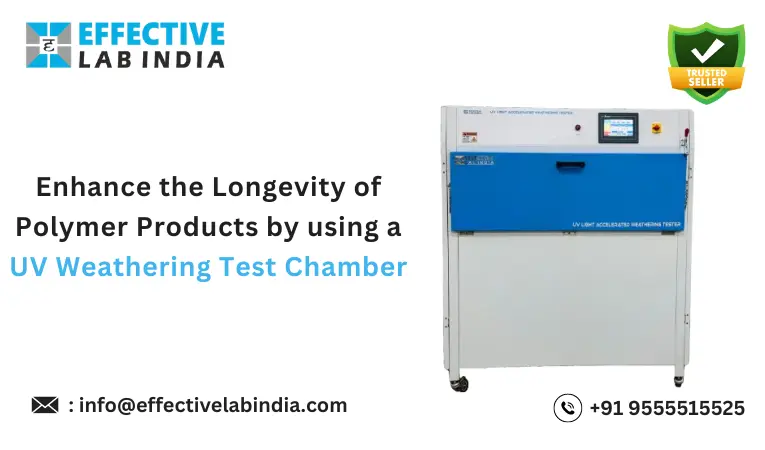Products made up of polymers have a chance to impact their longevity due to environmental conditions. Extreme environmental conditions badly affect the polymer products. An example of this is a plastic chair which when left in sunlight tends to fade due to UV rays. These rays affect the surface of the coated polymer material and as a result, the chair gets damaged. Another degradation caused by environmental factors is the colour differences that are witnessed on the car due to direct contact with sunlight and the environment.
For testing the polymer products under exposure to sunlight Effective Lab India has brought you the best UV tester termed a UV weathering test chamber. It is designed with maximum precision to stimulate the real-life environment and evaluate the reaction of polymers when exposed to real sunlight.
One should know about the working principles of this tester and one must know how this tester works in determining the physical properties of polymers. So, let’s get started.
Working Process of UV Test Chamber
The UV weathering chamber is a precise instrument due to its simple working module. It allows the manufacturers to reach high levels of accuracy with ease. To conduct a test in this chamber, the operator should have to follow these steps.
Place the sample in the sample holder.
Make sure the sample is placed correctly.
After that, close the specimen holder and shut the lid of the testing chamber.
Operators can also Adjust the irradiance level, temperature, timing and test time with the help of HMI HMI-based LED screen.
With UVA or UVB lights added based on the customer’s specifications, the equipment now replicates real-world conditions inside the testing chamber. These lights simulate sunlight’s rays and have an impact on the specimen’s surface to gauge its resistance to fading. To replicate the heat of the sun’s rays striking the specimen, heaters are additionally incorporated into the instrument to control its irradiance level.
After the first measure of testing, the second test is applied which is rain imitation by spray testing technique. The tester is equipped with a water tank and allows the H2O to be sprayed on the specimen inside the chamber. It is sprayed with the help of sprinkles. Also, there is a ventilation port which allows the water to flow out of the chamber.
The final measure is to conduct a condensation test that stimulates humid conditions in the environment. This humid condition degrades the polymer’s durability. Condensation is done by supplying air at a certain temperature. It is controlled by the operator with the help of an HMI-based touchscreen.
Moreover, all of these testing methodologies have to be performed cyclically.
Characteristics of the UV test chamber.
- The most important feature of this instrument is the safety measures taken during testing.
- Come with the features of an alarm and indicator.
- Come with two different settings of light i.e.; UVB and UVA lamps.
- Equipped with 8 Xenon lights for replicating the rays from sunlight.
- The UV test can be conducted on a large scale due to the ability to test 48 samples at a time of the UV tester.
- The availability of irridance control is the best feature that attracts most manufacturers to test the products with a UV weathering tester.
- The operator can control Temperature and time with the help of an HMI based screen.





Comments